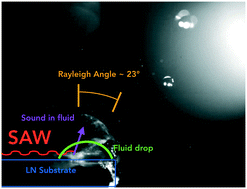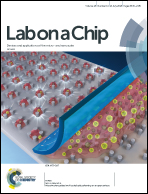Micro/nano acoustofluidics: materials, phenomena, design, devices, and applications
Abstract
Acoustic actuation of fluids at small scales may finally enable a comprehensive lab-on-a-chip revolution in microfluidics, overcoming long-standing difficulties in fluid and particle manipulation on-chip. In this comprehensive review, we examine the fundamentals of piezoelectricity, piezoelectric materials, and transducers; revisit the basics of acoustofluidics; and give the reader a detailed look at recent technological advances and current scientific discussions in the discipline. Recent achievements are placed in the context of classic reports for the actuation of fluid and particles via acoustic waves, both within sessile drops and closed channels. Other aspects of micro/nano acoustofluidics are examined: atomization, translation, mixing, jetting, and particle manipulation in the context of sessile drops and fluid mixing and pumping, particle manipulation, and formation of droplets in the context of closed channels, plus the most recent results at the nanoscale. These achievements will enable applications across the disciplines of chemistry, biology, medicine, energy, manufacturing, and we suspect a number of others yet unimagined. Basic design concepts and illustrative applications are highlighted in each section, with an emphasis on lab-on-a-chip applications.

- This article is part of the themed collection: Lab on a Chip Recent Review Articles


 Please wait while we load your content...
Please wait while we load your content...
